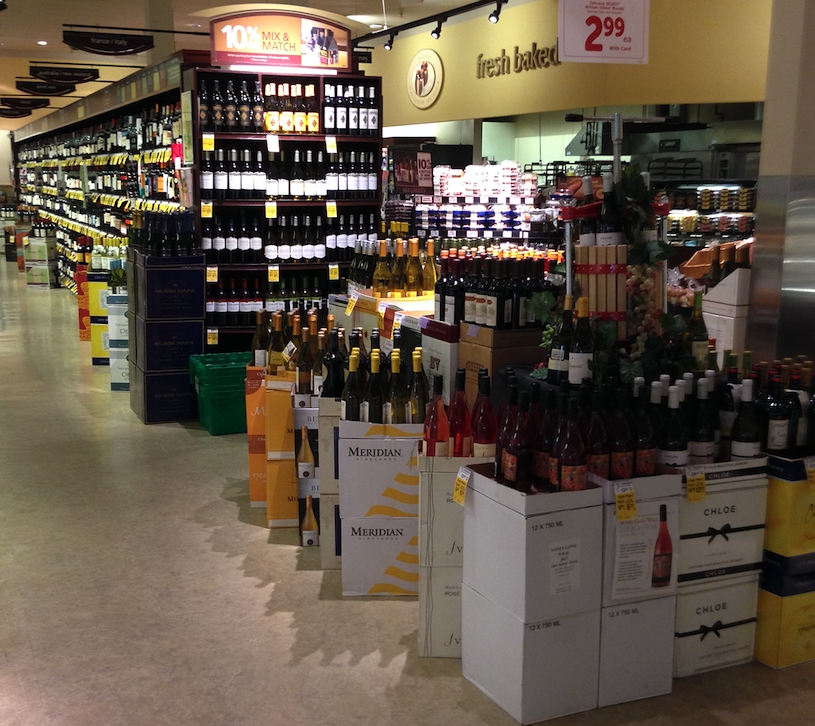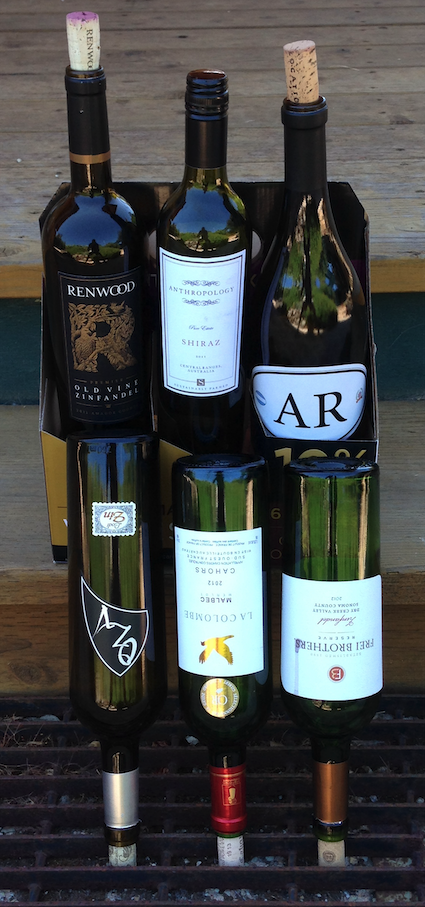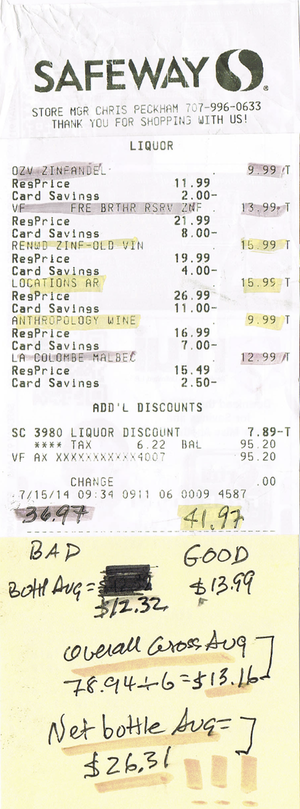The Casino. (The House Always Wins)
Buying wine is a lot like walking into a casino.
You know the odds favor the house, but the gamble is worth it to find a good bottle of wine to enjoy.
THE GAMBLE IS LIKE POKER
As gambles go, wine wagering is a bit like poker where luck can be supplemented by experience and knowledge. In my case, 45 years of experience, education and hands-on industry experience means that I lose only half of my money in the supermarket wine aisle as opposed to all of it in a Vegas casino.
It’s not that the wine is bad, it’s just not right for my taste.
So, I Placed My Bets … & Lost Half My Stake)
I gamble because it takes me outside the industry bubble. (for more 0n that, see Bad Wine & The Industry Reality Check.”)
Outside the industry bubble, there are no trade tastings, winery samples, and judgings for competitions. Just the reality of the vino casino market.
And in this casino, the house doesn’t really win when I lose: bad wine purchases don’t drive re-purchases.
I stick with the gamble it because I have been working to solve this problem for more than three decades.
Admittedly, I have handicapped myself by trying to buy wine like regular consumers: in supermarkets and big boxes, paying $15 per bottle max (after discounts) and never buying a wine that I have purchased before.
WINNERS AND LOSERS
The three left standing at the top are my winnings. The other three were poured down the drain.
It’s vital to recognize that other wine drinkers may actually like the wines I hated and would not drink if someone else bought them.
At the very least, those differences can arise from the fact that there are more than 1,000 genes that interact to form our senses of taste and smell.
FINANCIAL CONSEQUENCES
The receipt, below, highlights the wines I liked in yellow, and the ones I did not like in red.
I paid a total of $78.94 for six bottles of wine, after Safeway’s 6-bottle discount.
Here are the important metrics:
- $36.97 was poured down the drain after tasting.
- $41.97 was consumed.
- Gross average price per bottle: $13.16
- Net average price per bottle, (after dumping three bottles): $26.16
- Average price per bottle of the wine we liked: $13.99
- Average price per bottle of the wine we dumped: $12.32
- Difference in average price between enjoyed and dumped: $1.67
There’s a whole lot more difference in the taste than is reflected by $1.67.
EDUCATION: THE 50% NON-SOLUTION
I’ve also found that the solutions the wine industry has come up with fall way short.
One of those preferred solutions is educating consumers. As a better-than-average educated consumer, I can testify that won’t work.
As I mentioned above, I’m a pretty educated consumer but no matter how hard I try, I can’t score any better than 50% when I try to find wines I like at retail. My success rate is even lower at some of the larger retail outlets.
Education not only fails when it comes to finding a bottle at retail that fits the buyer’s palate, but it is also time-consuming, introduces friction in the sales process, and most consumers are simply not interested. They just want a reliable way to find a bottle they will like.
WHY EDUCATION FAILS, PART 1 — BRAND CONSISTENCY
The most basic form of education is to find a wine you like … at a tasting, dinner, by the glass, at friends’ …then just buy that. That’s boring and, sadly, not reliably safe.
Brands sabotage reliability and repeat sales in many ways:
- Wineries succumb to the vin0-fashion industry where style changes faster than a Paris haute couture runway.
- Larger wineries — who have the option of blending for consistency — fail at that.
- The purchase of small wineries by big ones inevitably leads to severe declines in quality that drift away from what made those wines so popular to begin with. It happens with ultra premium brands — Matanzas Creek and Arrowoopd to name two — which have gone from my all-time faves to ordinary and not worth the price. It also happens with popular-priced wines like Rosenblum and Big House red.
- Vintage variations are so severe and winemaking skills are so uneven that one year fails to resemble a previous one.
So much for finding a brand and sticking to it.
WHY EDUCATION FAILS, PART 2 — IT JUST DOES
My education is pretty extensive. I’ve studied and enjoyed wine for only about 45 years now, and yet my experience fails me at least half the time. I’ve been a fine wine importer/retailer/wholesaler, a judge in several of the top wine competitions including Andy Blue’s San Francisco International, taken wine courses as a student at Cornell and written wine columns for magazines.
But no matter how hard I try, I can’t score any better than 50% when I try to find new wines to buy at Safeway. My success rate is even lower at some retail outlets (Whole Foods, Lucky’s, Trader Joes, BevMo) where I’m lucky to find 20% that fit my taste. I do manage about 70% at Costco, but that’s a long drive.
If education is failing me that badly, God help the average consumer.
HOW EDUCATION FAILED ME IN THE VINO CASINO
So, how did experience direct me in the six wines above (none of which I had ever tried before).
First of all, I went for “produced and bottled by” trying to avoid blended plonk. That turned out to be a losing strategy with the Lodi and Dry Creek Zins.
The winners:
I’ve never had a bad wine from Orin Swift or Renwood. That still holds.
So far, I’ve never had an Aussie Shiraz I didn’t like. I figured this unknown brand was a gamble. But my Shiraz betting strategy still holds.
The losers:
Before now, I’ve never had a Dry Creek Zin I hated. Frei has shaken that belief.
Lodi Zins have had a good, reliable reputation, but I have had several in the past year that were substandard. OZV has followed in that line of mediocrity. Disappointing. Back in the early 1990s, when I owned Wine Business Monthly, I helped the Lodi-Woodbridge Winegrape Commission get the word out that they were an up-and-coming region that was going for quality. The last half dozen Zins I have bought from there indicates that the quality push to be slipping badly.
And the unknown French Malbec? That was the only one that I actually thought was a gamble. It was and I lost.
So, my education and experience told me that two of these six were gambles and the rest were solid bets.
Not so.
THE SHAKY CORE
And if my experience and education failed me think of the average consumer. No wonder, then, that the wine industry is built around a shaky core.
According to the Wine Market Council, Core wine consumers are about 20 percent of the wine market and they consume about 80 percent of the wine.
And the Core wine consumer is anyone who drinks wine more than once a week.
Once a week? That’s a pretty shaky core.
Just imagine what might happen if there were a reliable, consistent way for wine consumers to find a bottle they liked without hassle, education, retail friction, gambling and other barriers.

